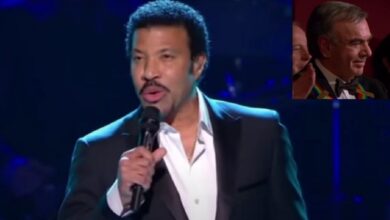As He Starts The Third Verse, It Becomes The Most Beautiful Sound Ever Created
Elvis Presley’s live rendition of “Never Been To Spain” during his 1972 performances in Las Vegas represents a pivotal moment in the evolution of his artistic expression. Written by Hoyt Axton and originally brought to life by the band Three Dog Night in 1971, the song’s narrative of yearning and exploration resonates deeply with themes present in much of Elvis’s work. His interpretation, which blends rock, blues, and soul, is a testament to his unique ability to transform a song into a personal experience for both himself and his audience.
The arrangement of the live performance highlights Elvis’s vocal strength, supported by a robust band that includes a captivating horn section. This sonic backdrop amplifies the emotional weight of the lyrics, allowing Elvis to navigate through the song’s highs and lows with remarkable ease. He employs a variety of vocal techniques, effortlessly shifting between powerful belting during the choruses and softer, more intimate moments in the verses. This dynamic range not only showcases his technical skill but also his deep understanding of the song’s emotional landscape.
Within the context of Elvis’s Las Vegas performances, “Never Been To Spain” stands out as a song that embodies both spectacle and sincerity. The ambiance of the city, with its dazzling lights and vibrant nightlife, serves as an effective counterpoint to the song’s introspective themes of longing. Elvis’s concerts in Las Vegas during this period were characterized by a sense of extravagance and showmanship, yet his ability to convey personal narratives amidst such grandiosity speaks to his artistry. In a room filled with adoring fans, he creates an intimate connection, inviting them to share in the sentiments of the song as if they were his personal confidants.
The appeal of “Never Been To Spain” is not solely in its music or performance but also in its relatable narrative. Elvis taps into a universal desire for exploration, as the protagonist muses about places he has never visited. This theme resonates with audiences, invoking a sense of wonder about places yet to be discovered. The way Elvis delivers the lines reflects a yearning that many listeners can relate to, allowing them to see a piece of their own stories within his performance.
As a performer, Elvis’s charisma plays an essential role in his live shows. His stage presence is magnetic, drawing the audience in and making them feel as if they are part of the experience. With each performance, he engages with fans not just through his music but also via gestures, expressions, and an infectious enthusiasm that seems to flow from him effortlessly. This connection fosters a sense of community among audience members, uniting them in shared emotions and experiences.
Elvis’s musical journey began in his hometown of Tupelo, Mississippi, where he was born on January 8, 1935. His early influences included gospel music and the rhythm and blues he heard during his upbringing. After moving to Memphis, he recorded his first single with Sun Records, which marked the beginning of a revolutionary career. By the 1950s, he had already begun to change the landscape of popular music, establishing himself as the “King of Rock and Roll” and influencing countless artists across multiple genres.
His ability to reinterpret songs like “Never Been To Spain” is a hallmark of his approach to music. He had an innate talent for taking existing melodies and infusing them with his personality, making them resonate in new ways. This skill not only contributed to his success but also influenced the trajectory of popular music, demonstrating the transformative power of an artist’s touch. Elvis’s covers often tell personal stories that reflect his experiences, further compelling listeners to engage with the music on a deeper level.
In the years following his rise to fame, Elvis spent significant time performing in Las Vegas, where he helped to redefine live entertainment. His residency shows became legendary, drawing in fans from around the world who sought the thrill of witnessing his electrifying performances. The energy of his nine-minute renditions often transcended the limitations of a typical concert, creating a theatrical ambiance that kept audiences coming back for more.
Even today, Elvis’s legacy endures powerfully in the contemporary music landscape. He remains a touchstone for artists across various genres, inspiring a new generation of performers to explore their own artistry. His ability to embody different musical traditions while maintaining a distinct identity has established him as a pillar in the history of music. From pop and rock to gospel and country, his influences can be heard in the works of countless musicians who trace their own inspirations back to his pioneering spirit.
In conclusion, Elvis Presley’s live performance of “Never Been To Spain” is much more than a mere cover; it encapsulates the quintessence of his artistry and his ability to connect with audiences. His legacy as an entertainer is echoed through every note sung, every story told, and every emotion shared on stage. This performance stands as a testament to his enduring appeal and the timeless nature of his music, as he remains an emblematic figure whose influence continues to permeate the fabric of modern pop culture.





